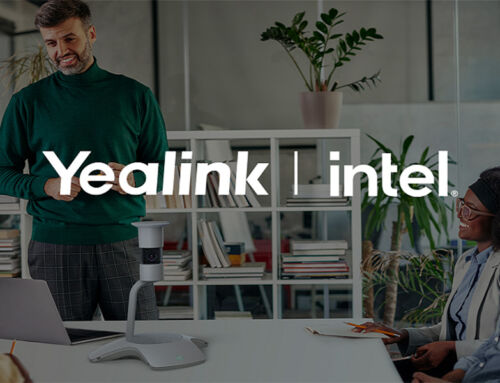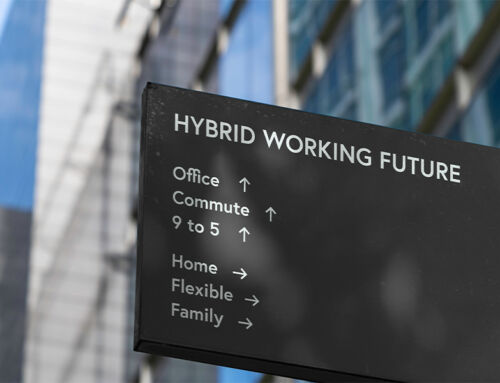Throughout many of the blogs we’ve put out on the Ultimate Technologies Group blog page, we’ve discussed many ways why your office needs hybrid work implementation and the benefits that it comes with.
However, your company’s hybrid work plan/strategy must be squared away to ensure success, because if parts of the plan aren’t strong enough, then your business and your employees will find themselves in a world of hurt.
So, what are the results of poorly implemented hybrid work plans, and what are some ways that employers can fix them?
Read on to learn more!

What the Employees Want From Hybrid Work
Since the start of the pandemic, hundreds of surveys have been conducted on what employees want from hybrid work, and their answer is clear: most employees who are not required to be in-person want their workweek to be a mix of remote work and in-person office work.
Although hundreds of corporations are adhering to these demands from their employees, not every business has the means to make such a drastic change. They could be held back from their corporate budget, their number of employees, or the kind of work they do.
A survey from the engagement center TinyPulse concluded that more than 80% of HR departments say poorly planned hybrid work leads to heightened levels of exhaustion for employees. Workers say that hybrid work is even more emotionally draining than fully remote or fully in-office work, but the people scientists at TinyPulse suggest that hybrid work is not the sole factor for these feelings.
Like many things, there is an extensive list of pros and cons that come with hybrid work. Are you managing your time? Has your workload become too much or too little? Do you have enough time in your schedule for breaks and days off? Hybrid work alone cannot be the sole factor for employee exhaustion. There is usually way more to it.
Some of these reasons are explained in one of our blogs here. Simply put, if a company’s workforce is not equipped with the proper hybrid work equipment and proper hybrid work training, then it can become a nightmare.
But what does this mean? In the blog that was previously linked, one statistic notes that out of the 30 million huddle spaces (modern conferencing rooms), only 2% of them are video-friendly.
Thankfully this issue is one of the easiest to improve. Video collaboration tools inside a hybrid workspace make the job a whole lot easier. Even if the business only has one huddle room, it’s paramount that it is equipped with video and audio technologies so in-office workers can connect with remote workers and vice versa.
Here at Ultimate Technologies Group, we pride ourselves on being partners with some of the best technology corporations in the world. Employees could be trained in virtual environments like Microsoft Teams or other technologies like the SmartVision 60 and MeetingBar A20 offered by Yealink.

Finding Middle Ground
In theory, a hybrid work arrangement offers great benefits for both the employees and the employer. It blends together the typical in-office work that was done before the pandemic and the modern remote work so that there is still in-person collaboration and personalized flexibility options.
Furthermore, a 2021 Gallup study claims that more than 90% of employees who have some form of remote work in their work schedule claim that they want to continue that kind of schedule in the future. With that being said, why are so many still finding themselves exhausted?
Employers will be slightly relieved to know that these feelings of exhaustion stem from the employees’ feelings of uncertainty and lack of control. Many employees were first pushed to hybrid work, but as the pandemic stuck around and new variants came about, they were forced to move to fully remote work, and this leads to more feelings of uncertainty.
Of course, the pandemic is now officially over, so uncertainty from that should have already subsided naturally. However, even in the current state of the workforce, pushing an employee to do something new without proper training will almost always reveal feelings of doubt.
This is precisely why hybrid/remote work training is crucial. Hybrid work forces employees to change their daily habits. One day they’re in the office and the next day they’re sitting in their home office. The lack of consistency in their work schedule can lead them down negative paths.
It is up to employers and managers to make sure that employees have a strong schedule that adheres to the needs of both the employer and the employees.
For example, if you have a business with a hybrid work model and 50 employees, perhaps you have half of the employees in-office Monday, Wednesday, and Friday, saving Tuesdays and Thursdays for remote work.
When addressing the lack of control that employees are feeling, training and management strategies must be considered. Employees who have been using the earlier-mentioned technologies and environments know very well that they give you a great sense of control while you use them, but this doesn’t mean much if the employees aren’t properly trained.
It’s also important to take a look at your management and monitoring strategies within the business. There are all kinds of software that can track what employees are doing, but if the employer/managers go overboard with it, it can feel like they are breathing down the employees’ necks, even if they’re at home.
So how does a company find a middle ground in these situations? For starters, the employer and management team cannot dictate how the hybrid schedule will work. Healthy communication between employees and managers will help alleviate a lot of these issues, and even though the management teams may have more superiority over the employees, they cannot abuse it.
A lot of new things have come from hybrid work models, and they are forcing businesses to look at their management models too. Today, the top-down approach to the management model isn’t really working anymore. As new management models are developed, it would be no surprise to see flexible, employee-empowering models taking the mantle.
Planning and proper implementation of hybrid work models are a must for any modern business. If your business is trying to make the switch to a hybrid work model or you have questions about the hybrid work model, get in contact with an Ultimate Technologies Group representative today to learn more!
About the Author:
Ultimate Technologies Group is the global expert in virtual communication and collaboration technology. When it comes to high-end Audio Visual technology solutions, we are trusted by some of the most respected brands:
Commercial AV News & Thought Leadership:

2022 RedDot Winner – Yealink’s MeetingBoard 65

Sound Masking vs. Sound Absorption: Improving Conference Room Acoustics

The Current State of Hybrid Work May 2022




